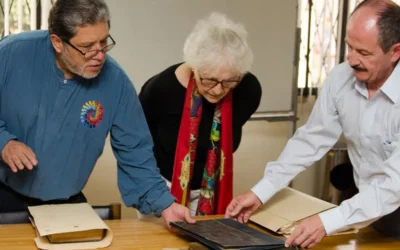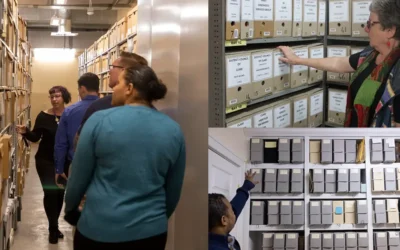Ethical, Legal, and Cultural Considerations for Digital Archival Projects
Margot Note
When digitizing collections, archivists should always take legal and ethical rights into consideration and proceed with caution when documenting culturally sensitive content—with sympathy as to the context of how the materials were collected, and consideration in the manner in which such content is presented.
Sensitive content includes anthropological images, materials related to Native American communities or heritage, or any cultural property. Additionally, it includes items that involve people photographed against their will or in exploitative situations. Please read on for a list of important rights, restrictions and considerations for the ethical archivist.
Publicity Rights
The right of publicity generally is associated with public figures. Publicity rights address commercial gain based on one’s name, likeness, voice, persona, or other commercially exploited aspects of personality. Laws vary internationally and, in the United States, state by state. A further complication is that in some regions this right may continue after death, but in others, it ends at the death of the subject.
Privacy Rights
The right of privacy relates to private citizens rather than celebrities, though there are significant exceptions. In contrast to publicity rights, privacy rights are noncommercial in nature and protect people from intrusion into their private affairs, from the public disclosure of private information, and from being presented in a false light. If the materials are sufficiently intrusive or embarrassing, the likelihood of obtaining permission from the subject to share them is slim.
The right of privacy generally ends at the death of the subject. Each organization will have a different comfort level with the potential for controversy created by distributing images that could be perceived as violating privacy.
Donor Restrictions
Images may have restrictions or limitations placed on access to (or use of) materials stipulated by the donor individual or organization. The restrictions may require that portions of the collection be closed for a period or that a specific credit line be used if materials from the collection are exhibited or published. Donor restrictions are often mitigated by a deed of gift—a formal agreement between the donor and the repository that transfers ownership of and legal rights to the donated materials.
Digital Manipulation
Credibility problems created by manipulated images have existed since the early days of photography. Despite this, photographs are often assumed to be accurate representations of reality, unless it is evident that they have been manipulated. Viewing collections online cannot be a viable alternative to the reading room experience unless the integrity of the digital images can be assumed. There must be the presumption by the user that an honest effort has been made to replicate the original image digitally to the degree that the technological constraints allow.
Manipulation of digital images should always be done on a copy of the unprocessed image data file. The original raw data file is the standard to which the final image can and should be compared. Any deliberate or unavoidable deviations, such as cropping, must be documented. Institutions should establish a code of ethics associated with the creation, manipulation, and distribution of files. If a policy is in place, it will help authenticate image files and establish the institution as a credible source for historical materials.
The Ethical Archivist
Archivists and the institutions they work for should have a flexible legal policy framework, based on risk assessment. Clear, documented processes that reflect legal and cultural considerations allow archives to continue to offer access to their materials without trouble.
Margot Note
Similar Posts
Navigating Selection in Archival Practice
The archival selection process is far from straightforward, given the limitations of long-term preservation and ongoing accessibility challenges.
Responsible Stewardship in Archival Practice
Responsible stewardship is a philosophy that guides the actions and decisions of archivists in safeguarding collective memory.
A Modern View of a City’s History via ArchivEra
Brief success story on City of Regina Archives’ use of ArchivEra to manage collections of legal, historical, administrative or financial significance
Stewards of the Past, Guardians of the Future
Archival preservation bridges the past and future, allowing the voices and stories of bygone eras to resonate with contemporary and future audiences.
Hosting service
Enjoy all of the benefits of your Lucidea solution with secure, reliable, stress free hosting
Programs & incentives
No matter your size or budget, we’ve got you covered, today and tomorrow



